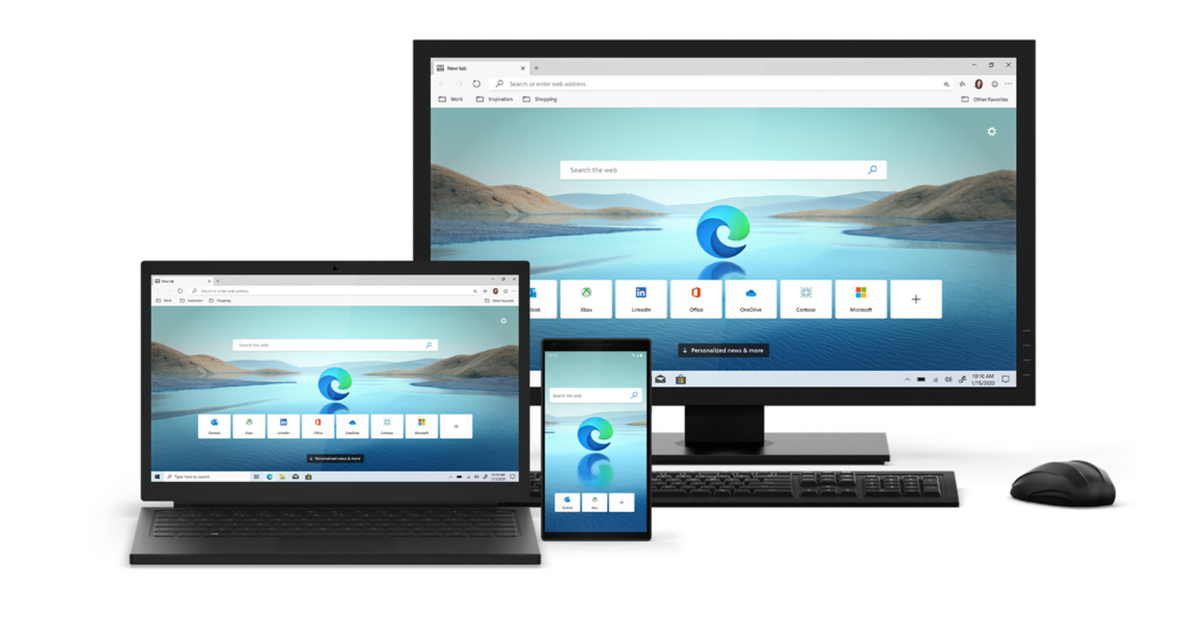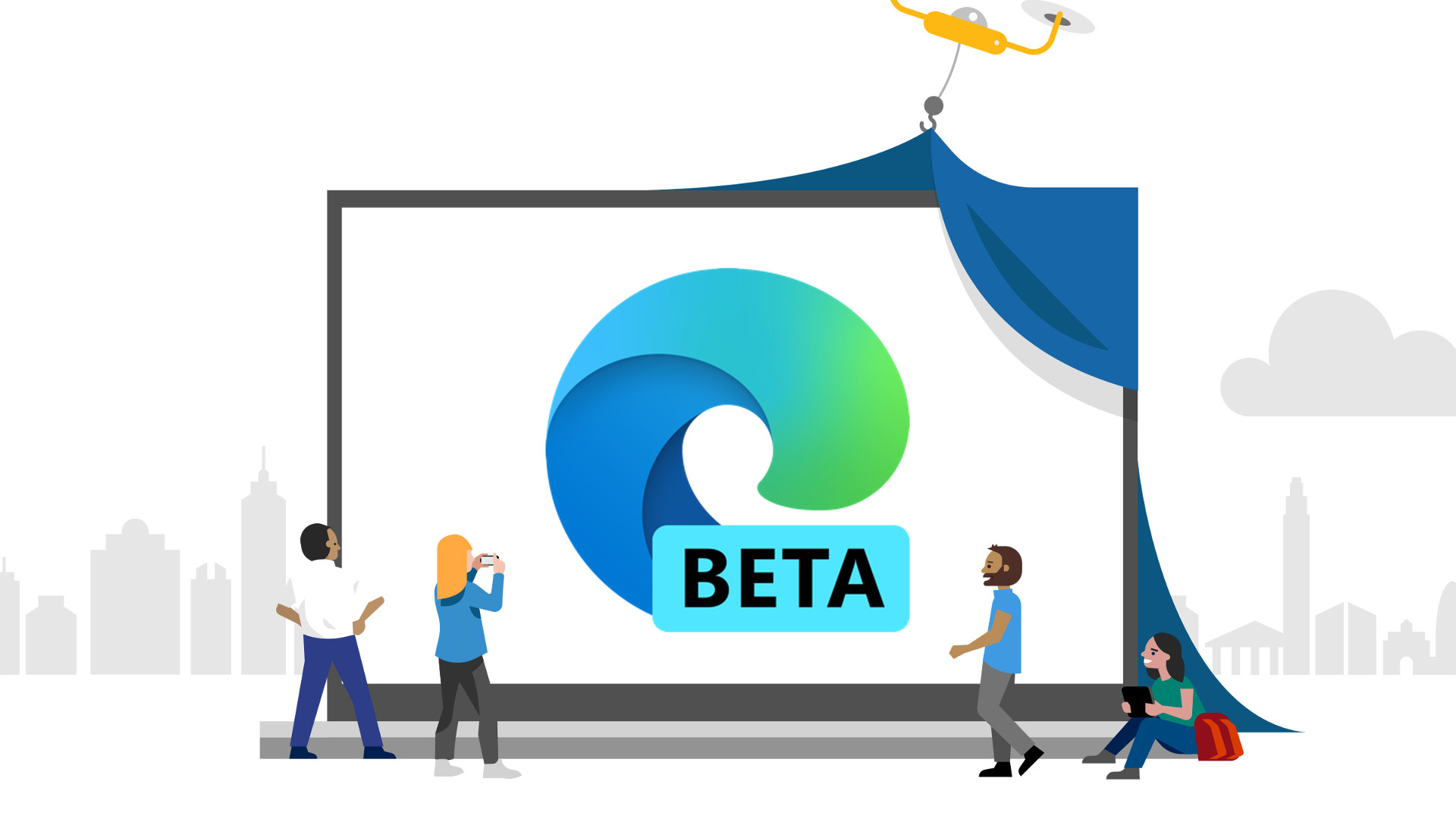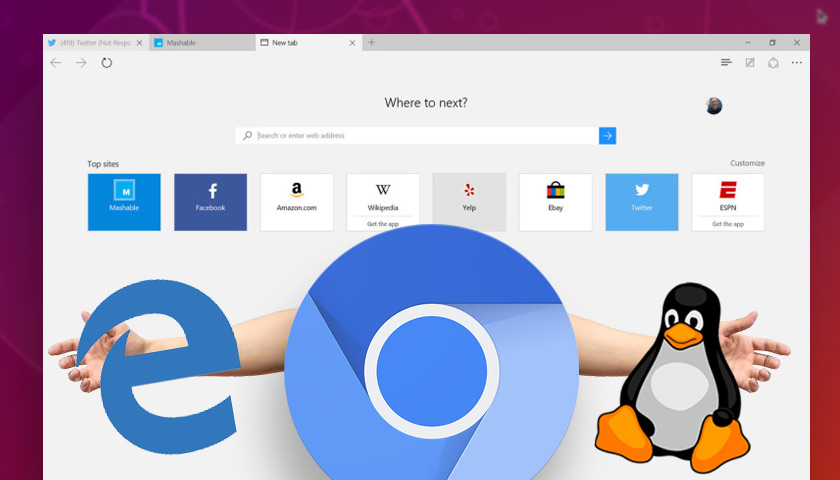- Microsoft Edge Chromium Release Date
- Microsoft Edge Chromium Release Date
- Microsoft Edge Chromium
- Download Latest Edge Chromium Browser
- New Microsoft Edge Chromium
- Microsoft Edge Chromium Download Link
To enable IE Mode on Chromium Edge with Group Policy, use these steps: Open Start. Search for gpedit and click the top result to open the Group Policy Editor. Browse the following path: Computer Configuration Administrative Templates Microsoft Edge; Double-click the Configure Internet Explorer integration policy. Microsoft Edge Group Policy. Capabilities and EdgeOptions.; 4 minutes to read; M; j; b; z; In this article. Capabilities are options that you may use to customize and configure an EdgeDriver session. To learn about starting a new EdgeDriver session, navigate to Automating Microsoft Edge. The Beta channel is the most stable Microsoft Edge preview experience. With major updates every 6 weeks, each release incorporates learnings and improvements from our Dev and Canary builds. Also available for. Windows 8 / 8.1.
-->This article describes the release cadence and anticipated release schedule for Microsoft Edge.
Release cadence
Microsoft provides four options, called channels, to manage how often Microsoft Edge is updated with new features. The Microsoft Edge team plans to push public updates to the Beta and Stable channels every six weeks. For more information about our channels, their release cycle, and support levels, see the Channel overview.
Note
Starting with Stable channel version 94, Microsoft Edge is moving to a 4-week major release cycle cadence. However, we recognize that enterprise customers who manage complex environments need more time to plan and test Microsoft Edge updates. To help our enterprise customers who need an extended timeline to manage updates, Microsoft Edge will offer an Extended Stable option aligned to a longer, 8-week major release cycle; this option will only be available for customers with managed environments.
Release schedule
Wow download mac client. The following table lists the planned release dates for the Beta and Stable channels.
Note
Release dates are approximate and might vary based on build status.

Microsoft Edge releases
The following table only tracks and provides information for major releases in both channels.
| Version | Release status | Beta Channel Release week | Stable Channel Release week |
|---|---|---|---|
| 88 | Released Version | 09-Dec-2020 88.0.705.18 | 21-Jan-2021 88.0.705.50 |
| 89 | Released Version | 03-Feb-2021 89.0.774.18 | 04-Mar-2021 89.0.774.45 |
| 90 | Released Version | 16-Mar-2021 90.0.818.8 | Week of 15-Apr-2021 90.0.818.39 |
| 91 | Target release | Week of 27-Apr-2021 | Week of 27-May-2021 |
| 92 | Target release | Week of 08-Jun-2021 | Week of 22-Jul-2021 |
| 93 | Target release | Week of 03-Aug-2021 | Week of 02-Sep-2021 |
| 94 | Target release | Week of 01-Sep-2021 | Week of 23-Sep-2021 |
| 95 | Target release | Week of 28-Sep-2021 | Week of 21-Oct-2021 |
| 96 | Target release | Week of 26-Oct-2021 | Week of 18-Nov-2021 |
| 97 | Target release | Week of 30-Nov-2021 | Week of 06-Jan-2022 |
Release Process
The trigger for Beta and Stable major releases is an equivalent Chromium release.
Progressive rollouts
The date reference (Released/Release week) for the Stable channel references the beginning of the progressive roll out.
We use a progressive rollout model which means that new release availability for any given device could be staggered over upcoming days. For more information, see Progressive rollouts for Microsoft Edge Stable Channel.
See also
-->An extension is a small program that you (a developer) use to add or modify features for Microsoft Edge (Chromium). An extension is intended to improve a user's day-to-day browsing experience. It provides niche functionality that is important to a target audience.
You may create an extension if you have an idea or product that is based upon either of the following conditions.
- A specific web browser.
- Improvements to features of specific webpages.
Examples of companion experiences include ad blockers and password managers.
An extension is structured similar to a regular web app. At a minimum, it should include the following features.
- An app manifest JSON file that contains basic platform information.
- A JavaScript file that define functionality.
- HTML and CSS files that define the user interface.
To work directly with part of the browser, such as a window or tab, you must send API requests and often reference the browser by name.
Basic guidance
Some of the most popular browsers to build extensions for include Safari, Firefox, Chrome, Opera, Brave, and Microsoft Edge. Great places to begin your extension development tutorials and documentation research are sites hosted by the browser organizations. The following table isn't definitive, and may be used as a starting point.
| Web browser | Chromium-based? | Extension development webpage |
|---|---|---|
| Safari | No | developer.apple.com/documentation/safariservices/safari_app_extensions |
| Firefox | No | developer.mozilla.org/docs/Mozilla/Add-ons/WebExtensions |
| Chrome | Yes | developer.chrome.com/extensions |
| Opera | Yes | dev.opera.com/extensions |
| Brave | Yes | Uses Chrome Web Store |
| new Microsoft Edge | Yes | developer.microsoft.com/microsoft-edge/extensions |
Important
Many of the tutorials of the sites use browser-specific APIs that may not match the browser for which you develop. In most cases, a Chromium extension works as-is in different Chromium browsers and the APIs work as expected. Only some less common APIs may be strictly browser-specific. For links to the tutorials, navigate to See also.
Microsoft Edge Chromium Release Date
Why Chromium?
If your goal is to publish your extension in the extensions store for each browser, it must be modified for each version to target and run in each distinct browser environment. For example, Safari extensions may use both web and native code to communicate with counterpart native applications. The last four browsers in the previous table use the same code package, and minimizes the requirement to maintain parallel versions. These browsers are based on the Chromium open-source project.
Create a Chromium extension to write the least amount of code. It also targets the maximum number of extension stores and ultimately the maximum number of users who find and acquire your extension.
Microsoft Edge Chromium Release Date
The following content focuses mostly on Chromium extensions.
Browser compatibility and extension testing
Occasionally, API parity doesn't exist between Chromium browsers. For example, there are differences in the identity and payment APIs. To ensure your extension meets customer expectations, review API status through the following official browser docs.
The APIs you require define the changes you must make to address the differences between each browser. It may mean that you must create slightly different code packages with small differences for each store.
To test your extension in different environments before you submit it to a browser store, sideload it into your browser while you develop it.
Publish your extension to browser stores
You may submit and seek browser extensions in the following browser stores.
Some stores allow you to download listed extensions from other browsers. However, cross-browser access is not guaranteed by browser stores. To ensure your users find your extension in different browsers, you should maintain a listing on each browser extension store.
Users may need to install your extension in different browsers. In this scenario, you may migrate existing Chromium extensions from one browser to another. What is the best free cad software for mac.
Migrate an existing extension to Microsoft Edge
If you've already developed an extension for another Chromium browser, you may submit it to the Microsoft Edge Add-ons store. You don't need to rewrite your extension, and must verify it works in Microsoft Edge. When you migrate an existing Chromium extension to other Chromium browsers, ensure the same APIs or alternatives are available for your target browser.
Microsoft Edge Chromium

For more information on porting your Chrome extension to Microsoft Edge, navigate to Port Chrome extensions to Microsoft Edge (Chromium). After you port your extension to the target browser, the next step is to publish it.
Publish to the Microsoft Edge add-ons website
To start publishing your extension to Microsoft Edge, you must register for a developer account with an MSA email account to submit your extension listing to the store. An MSA email account includes @outlook.com, @live.com, and so on. When you choose an email address to register, consider if you must transfer or share ownership of the extension with others in your organization. After registration is complete, you may create a new extension submission to the store.
Download Latest Edge Chromium Browser
To submit your extension to the store, ensure you provide the following items.

- An archive (
.zip) file that contains your code files. - All required visual assets, which include a logo and small promotional tile.
- Optional promotional media, such as screenshots, promotional tiles, and a video URL.
- Information that describes your extension such as the name, short description, and a privacy policy link.
Note
Different stores may have different submission requirements. The above list summarizes the requirements to publish an extension for Microsoft Edge.
After you've successfully submitted your extension, your extension undergoes a review process and either passes or fails the certification process. Owners are notified of the outcome and given next steps as required. If you submit an extension update to the store, a new review process is started.
New Microsoft Edge Chromium

Microsoft Edge Chromium Download Link
See also
